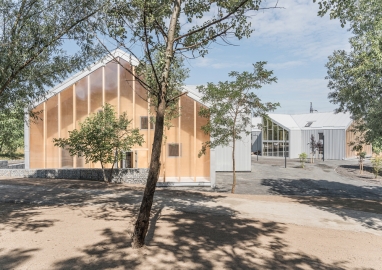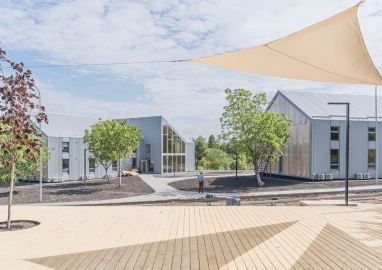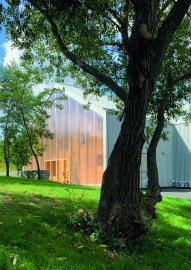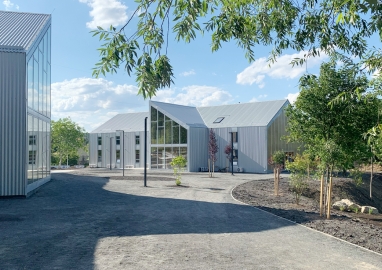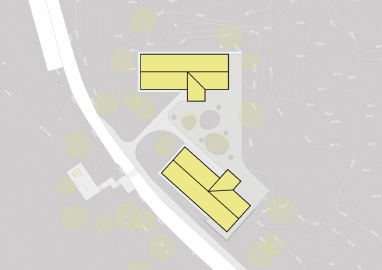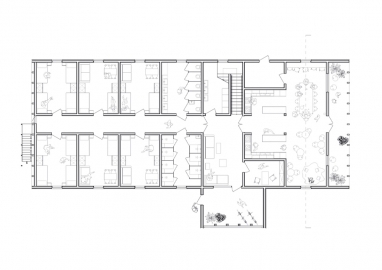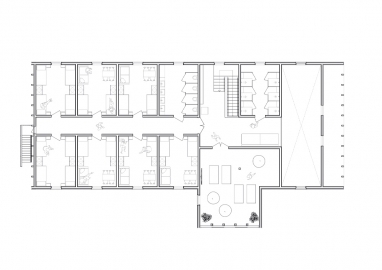Temporary housing for refugees "Unbroken Mothers»
A Temporary Housing Project in Lviv defines a vision for Affordable and More Compassionate Refugee Residences.
The Temporary housing project for internally displaced persons aims to humanize housing for refugees. This social project rethinks the appearance of a typical temporary dwelling. Making a step aside from common container solutions, It shows how temporary housing can become a part of city urban fabric and provide a sense of home and security.
The complex is located in a quiet neighbourhood in the city of Lviv, next to the revitalized parkland. Two houses, mirroring each other, are united by a common space of the courtyard. Following the terrain, the space between the houses turns into a new park with a children playground, sports facilities, walking paths and a lake.
Two-story buildings have a mirrored planning structure with 1300 square meters of total gross area. Each building fits 13 rooms and can comfortably accommodate 26 to 52 people.
The project brief was to provide a shelter for internally displaced persons. The concept implemented by Sulyk Architects was to reevaluate both the form and function of temporary housing. This project aimed not only to facilitate the seamless integration of its residents into the urban environment but also to envision these structures being adapted for communal purposes in the future, once their temporary housing role becomes obsolete.
The silhouette of the building in the form of a traditional hut is subconsciously perceived as a basic image of home, especially for the children who live here. In order to preserve the delicacy of the facade, the junctions and details were design to slightly appear beyond the surface of the facade. The psychological aspect of temporary hosing for war refugees is extremely important. As the facade is covered mostly with metal sheets, all the inside walls and ceilings are covered in plywood surfaces. Timber interior contrasts the exterior metal shell, providing a warm domestic feel on the inside.
The structure of the buildings is made of simple materials, such as wooden beams and columns, insulated with mineral wool. As the facade is covered mostly with metal sheets, all the inside walls and ceiling are covered in plywood. The project of temporary housing in the realities of an ongoing war, required clean and concise architecture that could be implemented quickly and on a budget.
The rectangular plan extends towards the park. A warm wooden texture emerges from the metal shell of the building through the loggias, facing the park. Exposed wooden columns are covered with a semi-translucent polycarbonate, creating a transitional space between a common dining areas and a park.
The facing materials are designed to withstand the weather conditions and provide an easy maintenance.

